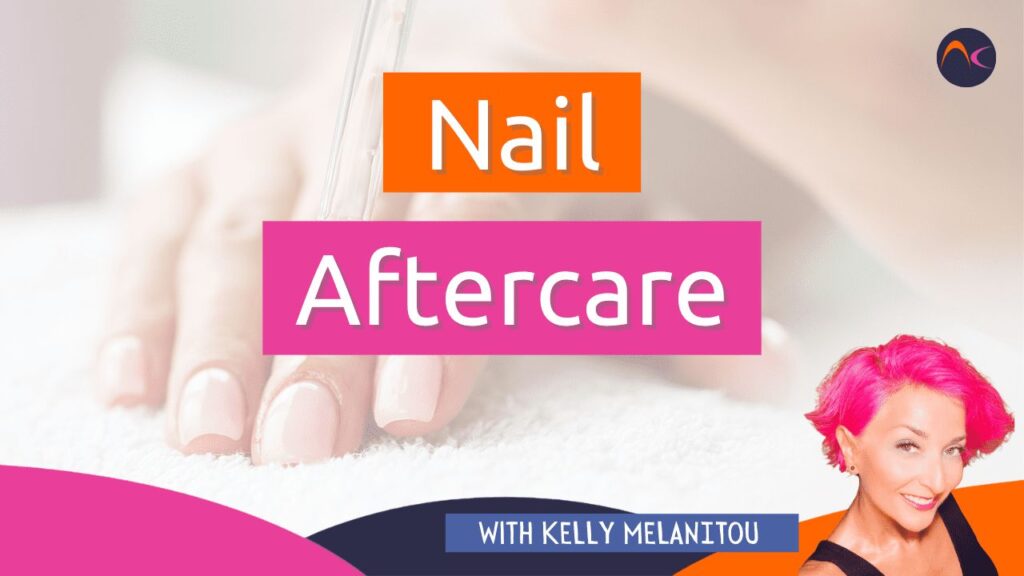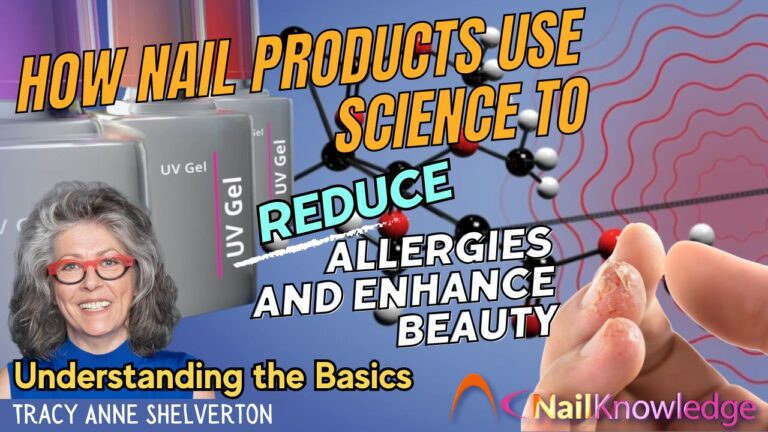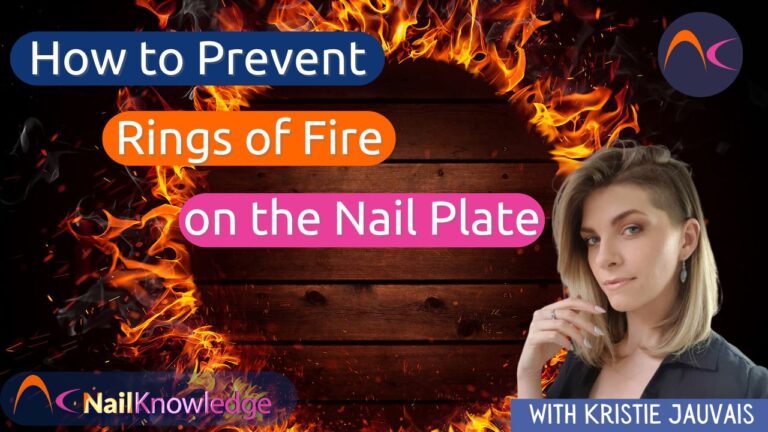As nail professionals, we strive to be the best we can be (or should at least). We want to provide our clients with a great experience, beautiful nails, and long-lasting results. We create beautiful spaces, take classes, and keep practicing but, somehow, many of us forget to stress one of the most critical factors of long-lasting results: nail aftercare at home!
Making sure you are providing good nail aftercare advice will help keep your clients happy and regular at your salon. There are aftercare dos and don’ts for every type of service you provide. Let’s take a look at the main ones.
Manicure aftercare
- Use suitable moisturizers. Ingredients like mineral oils and lanolin can cause lifting. some ingredients in sunscreens can also damage nail coatings.
- Wear rubber gloves when washing up to avoid contact with harsh detergents, which may dehydrate the nails and skin. Do the same when gardening or doing domestic chores to avoid accidental damage.
- Remove any rings before washing your hands, so that soap does not build up behind them and irritate the skin.
- Dry your hands thoroughly after washing them or taking a bath.
- Moisturize, moisturize, moisturize! Use hand cream regularly to keep your hands soft and moisturized. Keep hand cream at the kitchen and bathroom sink to remind yourself to apply it after washing. Change your hand cream depending on the season, using something richer during the winter months.
- Use a nourishing cuticle oil (not petroleum-based) daily. It will keep your nails, cuticles, and surrounding skin conditioned and moisturized.
- Smooth rough edges of broken nails straight away with a good quality nail file, with the correct roughness for your nails.
- Tinted lotions, suntan creams, hair products, and highly coloured foods can stain or discolor the coatings, so thoroughly wash hands after use, or wear gloves.
- If wearing traditional nail polish, apply a good top coat over it every 2-3 days to help it last longer.
- Drink plenty of water and keep a balanced diet to provide your skin and nails with the essential nutrients and hydration they need to be healthy.
- If any adverse reactions occur like a rash, redness, or inflammation of any kind around the nails, please contact your nail professional immediately.
Extra aftercare for gel polish and enhancements
- Be gentle for the first two days. There is still curing happening within the enhancements (especially l&p ones) during that time, so they are not yet as strong.
- Use cuticle oil daily. Cuticle oil can help plasticize the enhancements, making them more shock-resistant.
- If there are any signs of lifting, reach out to your nail professional right away. Water and bacteria can accumulate under lifted nails and cause an infection.
- Remove properly. If you decide to remove your coating at home, do NOT pull it off. This will rip off parts of the nail plate and cause damage. Use removal guidelines. You will need a nail file, orange-wood stick, cotton wool pads, tinfoil, acetone or an acetone-based remover, and cuticle.
- Maintain every 2-3 weeks. Visit the salon to rebalance your enhancements or remove and reapply your gel polish coatings regularly. Not only will they look immaculate all the time, but it is also healthier for the natural nail underneath.
- If you apply traditional nail polish over your enhancements, remember to use a base coat to help avoid staining. When you want to remove it, use non-acetone polish remover, as acetone can damage the enhancement underneath.
Don’ts
- Avoid intense hydration after leaving the salon, and for the first 24 hours. That means long baths, saunas, or the pool. The bonds between your nails and the coating are still building, and the extra hydration can disrupt the process.
- Avoid using any harsh soaps or contact with harsh chemicals after your service.
- Do not use the fingernails for tools (for instance, to praise lids off tins).
- Do not bite your fingernails, pick at your cuticles, or pull off hangnails. These habits can damage the nail bed or the live tissue around it. Even a minor cut alongside your fingernail can allow bacteria to enter and cause an infection.
Pedicure aftercare
- Avoid wearing any tightly fitted footwear after getting your pedicure treatment done. Try to wear open-toe shoes to allow your nail coating to set properly.
- Use a nourishing cuticle oil (not petroleum-based) daily. It will keep your nails, cuticles, and surrounding skin conditioned and moisturized.
- Smooth rough edges of broken nails straight away with a good quality nail file, with the correct roughness for your nails.
- Change your socks daily. It is best advised to wear cotton socks.
- Gently scrubbing your feet daily is recommended to avoid dead skin buildup and skin conditions such as athlete’s foot.
- Ensure feet are thoroughly dry after washing, especially between the toes. If needed, apply talcum powder or a special foot powder between the toes to help absorb moisture. If your feet get sweaty, foot sprays containing peppermint or citrus oil are useful to cleanse and refresh the feet during the day.
- Apply moisturizing cream daily to your feet preferably after bathing when the skin is softened, or before going to bed at night.
- Ensure that footwear fits properly. Foot problems such as bunions can be aggravated by incorrect footwear.
- Avoid wearing high heels for long periods of time. They can cause postural problems, and increase callus formation.
- Keep your toenails straight. Do not cut them too short or down the sides. This will make them grow into the skin.
- Drink plenty of water and keep a balanced diet to provide your skin and nails with the essential nutrients and hydration they need to be healthy.
Create handouts with your aftercare instructions and give them to your clients to take home. Add these instructions to your website. Discuss them thoroughly with your clients, and stress how important it is that they follow them, as they are part of the service. Explain how aftercare will help your clients make the most of their investment in nail care services.
After all, knowing about nail aftercare is not going to get us results. Practicing it will!
- Non-acetone polish remover
- Nail professional
- Athlete’s foot
- Nail coatings
- Inflammation
- Natural nail
- Moisturizer
- Cuticle oil
- Nail polish
- Gel polish
- Nail plate
- Enhancement
- Rebalance
- Base Coat
- Manicure
- Nail file
- Top Coat
- Bacteria
- Chemical
- Nail bed
- Nail care
- Lanolin
- Lifting
- Cuticle
- Coating
- Acetone
- Pedicures
- Lotion
- Cure / Curing
- Polish
- Bunion
- Callus
- L&P












